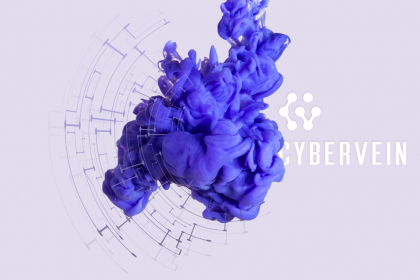The Blockchain Around Us: Technology in Use

Blockchain enthusiasts blame mass service providers for being reluctant to use the latest technologies and educate consumers about it. Meanwhile, the crowds are saying that blockchain technology is costly to implement and difficult to use without special knowledge, and the world is doing relatively okay without it. To tell you the truth, both sides are wrong.
We have been using blockchain for quite a while. What’s more, you may be using it right now and not even know it, just like you do with artificial intelligence. Yes, we use artificial intelligence solutions every time we Google something, scroll through the Suggested section on Instagram, or buy anything online.
“Blockchain” is not synonymous with “cryptocurrency,” as many may suppose. Blockchain is a technology, just like AI or the internet itself. Just like the internet was once quite different from what it is now, the blockchain is also constantly evolving. It is becoming more invisible, easier to use, and more powerful to store vast amounts of data.
Data drives our world. In fact, everything that surrounds us is data. You buy a coffee—the receipt is data. You save a meme—the meme is data. You google “what does a baby platypus look like”—your query is data. All data is stored somewhere, and that includes on the blockchain. The difference is that in the case of blockchain, the data is stored within a system, not chaotically.
Industry moguls have figured out that the implementation of blockchain solutions may save more resources than could ever be spent on its installation. For example, in 2006, mass food poisoning caused by E. coli happened in the USA. The investigation showed that the reason for the disease was spinach, but it took about two weeks to find out which spinach exactly. Spinach farms experienced some tough days, as did all the companies that bought spinach from those farms. What was the result of the investigation? The E. coli was found in one shipment from one single farm. Of course, there was no such thing as blockchain in 2006, but if there were, the agriculture industry could have used it to easily track the supply chain and find the guilty farm within a couple of minutes, all without stopping all the spinach industry.
Every day, more businesses and industries migrate to the digital world, which means new amounts of data are being stored in digital databases. However, traditional databases have turned out to have a lot of problems, such as data breaches, information silos, and limited scalability. These issues all arise from limited database capacity and result in low workflow efficiency and the inability to store and create new knowledge. New businesses require a new, more functional, and more powerful model that pursues multi-party participation, intelligent peer-to-peer collaboration, a professional division of labor, and value sharing.
CyberVein has offered a solution. CyberVein is a blockchain and big-data technology provider based in China. Its big-data solutions are based on the authentically developed PISR (private, interlink, secure, and robust) Distributed Database, focusing on customized enterprise-level blockchain-and-big-data services.
CyberVein has three core products: the PISR distributed database, the DAG Storage Chain, and the Federated Learning Platform, developed for data management, storage, and monetization, respectively. These products focus on solving three major problems of this information age: information silos, data security breaches, and slow data monetization. They perfectly link upstream and midstream data flows, aggregate and enable cross-domain governance of upstream data, and encapsulate data abstraction into services. These features provide business value to applications and create an enterprise-level data flow platform based on the blockchain.
Returning to real-life implementation of the technology, the best example of utilizing CyberVein’s big-data solutions is in medicine. This area is one large piece of big-data, and the efficiency of medical dataflow management and accessibility is crucial for every human being on Earth. Whether it is public health, clinical services, or medical research, all medical fields are inseparable from data support. CyberVein is the first to break the information silo in the medical world, establish a security authentication and access control model, and separate query-logic storage technology.
The security authentication and access control model based on the consortium database contains three parties: the patient, the medical staff, and the consortium database. The database is separated by the query logic to protect the privacy of the patient’s data. The logical-separation technology and the medical-alliance chain technology are closely combined to meet the needs of medical-data sharing between different hospitals, ensuring the patient’s data privacy and the medical staff’s permission to access the data—no paperwork, no mess, no lost data, and no hours spent on papers. It’s just like what that spinach situation could have looked like.
Disclaimer: This publication is sponsored. Coinspeaker does not endorse or assume responsibility for the content, accuracy, quality, advertising, products, or other materials on this web page. Readers are advised to conduct their own research before engaging with any company mentioned. Please note that the featured information is not intended as, and shall not be understood or construed as legal, tax, investment, financial, or other advice. Nothing contained on this web page constitutes a solicitation, recommendation, endorsement, or offer by Coinspeaker or any third party service provider to buy or sell any cryptoassets or other financial instruments. Crypto assets are a high-risk investment. You should consider whether you understand the possibility of losing money due to leverage. None of the material should be considered as investment advice. Coinspeaker shall not be held liable, directly or indirectly, for any damages or losses arising from the use or reliance on any content, goods, or services featured on this web page.